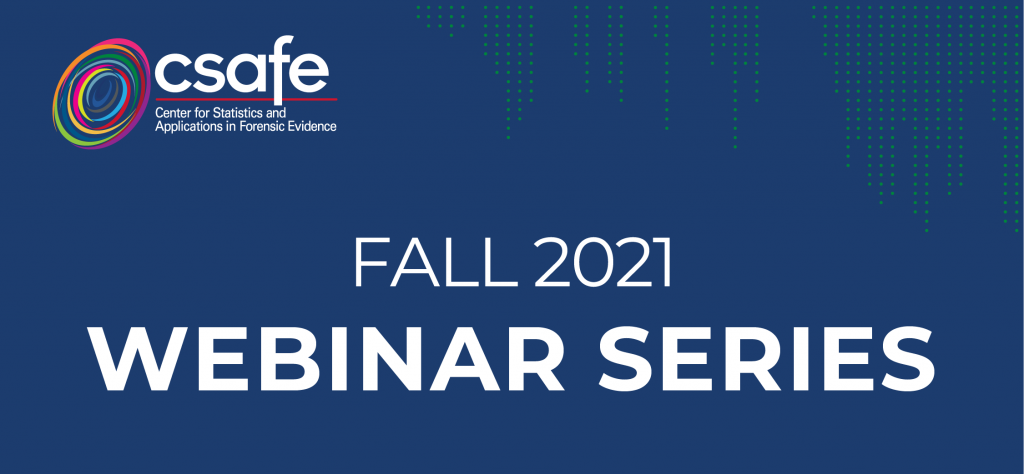The Center for Statistics and Applications in Forensic Evidence (CSAFE) has announced three webinars for its fall 2021 webinar series. The series begins on Sept. 22 and will continue through Dec. 9. The webinars will give participants an in-depth look at current forensic science research.
The webinars are free and open to the public, but researchers, collaborators and members of the broader forensics and statistics communities are encouraged to attend. Each 60-minute webinar will allow for discussion and questions.
To register for any of the webinars, visit https://forensicstats.org/events. Each webinar will be recorded and available for viewing later at https://forensicstats.org. For questions or more information on the series, contact csafe@iastate.edu.
The fall webinar series is sponsored by the National Institute of Standards and Technology (NIST) through cooperative agreement 70NANB20H019.
Topics and Dates

A Survey of Fingerprint Examiners’ Attitudes towards Probabilistic Reporting
Sept. 22 at 11 a.m.–noon CDT
Simon Cole
Professor at the University of California, Irvine
This webinar discusses the result of a survey of more than 300 friction ridge (fingerprint) practitioners about their attitudes toward probabilistic reporting of the results of friction ridge analyses. It will offer insights into the reaction to probabilistic reporting in a single forensic disciplinary community. These insights should help explain why probabilistic reporting is, or is not, embraced by practitioner communities. The results will be of interest not only to fingerprint practitioners but to practitioners from other disciplines and statisticians, lawyers, policy-makers and educators interested in promoting probabilistic reporting in forensic science.
Learn more about the survey and read the study.

Bloodstain Pattern Analysis Black Box Study
Oct. 14 at 11 a.m.–noon CDT
Austin Hicklin
Director of the Forensic Science Group at Noblis
Paul Kish
Forensic consultant at Paul Erwin Kish Forensic Consultant and Associates
Kevin Winer
Director of the Kansas City Police Crime Laboratory
The analysis of bloodstain pattern evidence left at crime scenes relies on the expert opinions of bloodstain pattern analysts. This is the first large-scale rigorous evaluation of the accuracy and reproducibility of practicing bloodstain pattern analysts’ conclusions. Results from the study show that conclusions were often erroneous and often contradicted other analysts. The disagreements with respect to the meaning and usage of bloodstain pattern analysis terminology and classifications suggest a need for improved standards. Both semantic differences and contradictory interpretations contributed to errors and disagreements, which could have serious implications if they occurred in casework.

Using Mixture Models to Examine Group Differences: An Illustration Involving the Perceived Strength of Forensic Science Evidence
Dec. 9, 9–10 a.m. CST
Naomi Kaplan-Damary
Lecturer at the Institute of Criminology, Faculty of Law at The Hebrew University of Jerusalem
CSAFE researchers and other researchers are working to develop scientifically rigorous analysis methods for forensic evidence. However, even if reliable quantitative conclusions about the strength of such evidence were available, how would courts perceive them? Do jurors understand statistical testimony? What value do they attribute to qualitative statements about the weight of evidence and how does this compare to their assessments of quantitative statements? The issue of how different types of summary statements about forensic evidence are perceived has become an important issue in forensics. In this webinar, Kaplan-Damary will report on a statistical analysis exploring population differences in the perception of forensic evidence.




